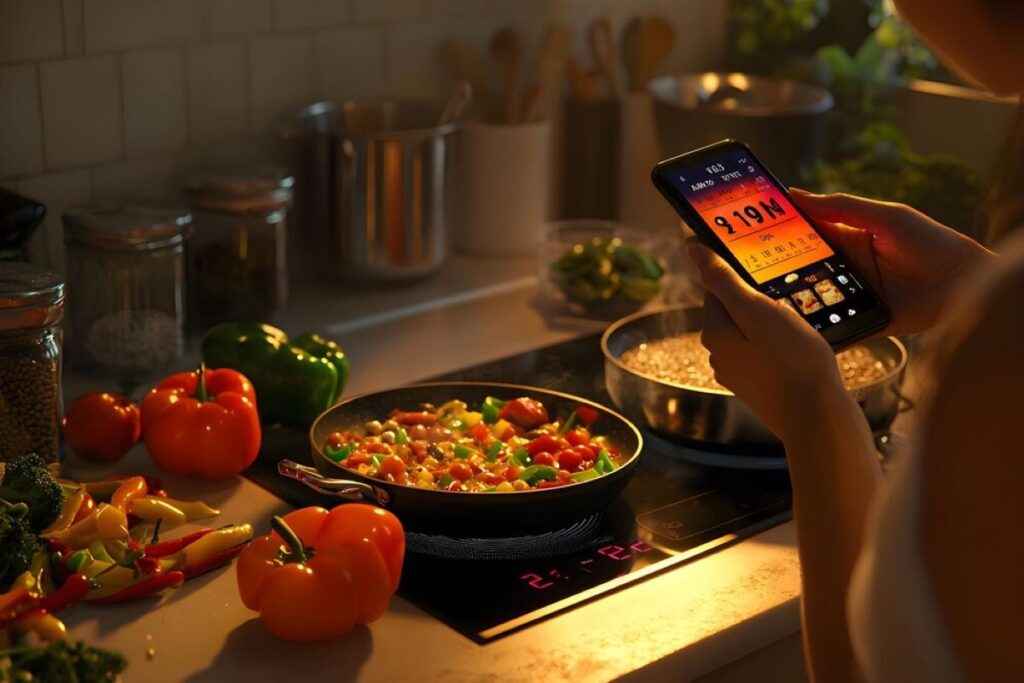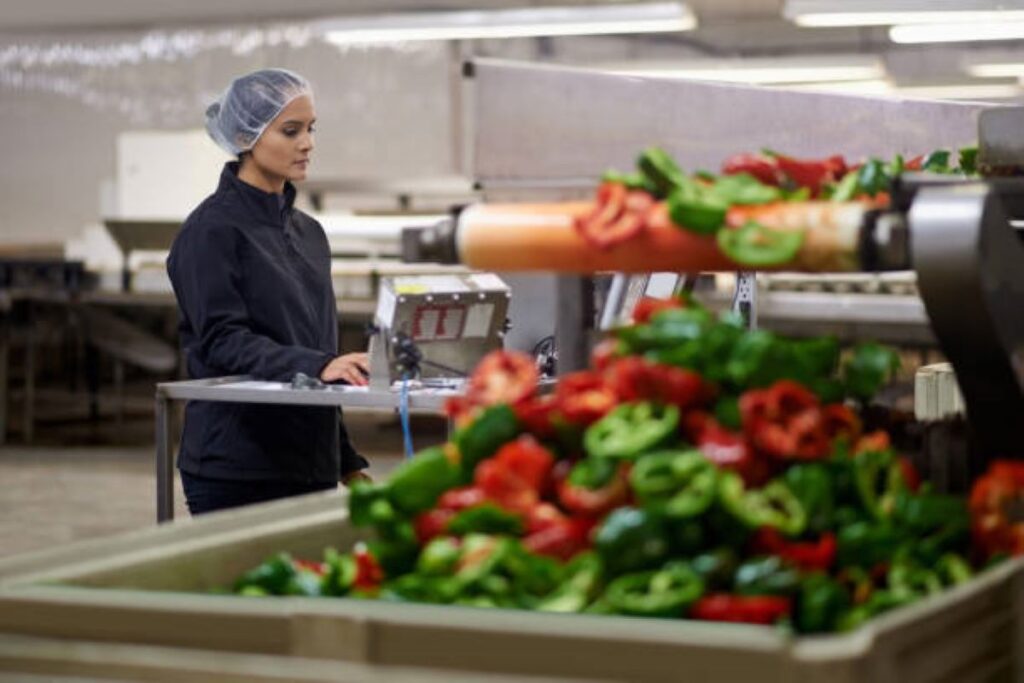In today’s fast-paced world, maintaining optimal storage conditions for perishable goods is essential, particularly in industries such as food service, pharmaceuticals, and biotechnology. Wireless freezer temperature monitoring has emerged as a crucial solution to ensure that temperature-sensitive products are stored correctly. This article delves into the importance of wireless monitoring systems, their benefits, and key considerations for implementation.
The Importance of Temperature Monitoring
Temperature control is paramount for preserving the quality and safety of frozen goods. Fluctuations in temperature can lead to spoilage, loss of potency, and even health risks. For businesses that handle perishable items, the implications of inadequate temperature monitoring can be severe, resulting in financial losses and reputational damage. The integrity of the cold chain must be maintained at all times, as any lapse can compromise the entire supply chain, affecting everything from production to delivery.
Moreover, the impact of temperature fluctuations extends beyond immediate spoilage. For instance, certain pharmaceuticals require stringent temperature controls to maintain their efficacy. A slight deviation can render a medication ineffective, posing serious health risks to patients relying on these treatments. Thus, the stakes are incredibly high, making reliable temperature monitoring not just a best practice, but a critical necessity in various sectors.
Regulatory Compliance
Many industries are governed by strict regulations regarding the storage of temperature-sensitive products. In Australia, the Food Standards Australia New Zealand (FSANZ) sets guidelines that food businesses must adhere to. Failure to comply with these regulations can lead to hefty fines and legal repercussions. These regulations are designed not only to protect consumers but also to uphold the integrity of the food supply chain, ensuring that all products are safe for consumption.
Wireless freezer temperature monitoring systems can assist businesses in meeting these regulatory requirements by providing accurate and continuous temperature data. This data can be invaluable during audits and inspections, demonstrating a commitment to compliance and safety. Furthermore, many systems offer cloud-based storage solutions, allowing businesses to access historical temperature data remotely. This feature not only simplifies record-keeping but also facilitates quick responses to any discrepancies, ensuring that businesses remain compliant with evolving regulations.
Risk Mitigation
Implementing a wireless monitoring system significantly reduces the risk of temperature excursions. Traditional manual monitoring methods are prone to human error, whereas automated systems provide real-time alerts when temperatures deviate from preset thresholds. This proactive approach allows businesses to take immediate action, preventing potential losses. In addition, many modern systems are equipped with advanced analytics capabilities, enabling businesses to identify patterns and trends over time. This data-driven insight can inform better operational decisions, such as optimising storage practices or scheduling maintenance for refrigeration units.
Moreover, the integration of temperature monitoring systems with other operational technologies can enhance overall efficiency. For example, linking temperature data with inventory management systems can help businesses optimise stock rotation and reduce waste. By ensuring that older stock is used first, companies can minimise the risk of spoilage while maintaining high standards of quality. This holistic approach not only safeguards products but also contributes to sustainability efforts by reducing food waste and promoting responsible consumption practices.
Benefits of Wireless Monitoring Systems
Wireless freezer temperature monitoring systems offer numerous advantages over traditional wired systems and manual monitoring methods. Understanding these benefits is essential for businesses considering an upgrade to their monitoring processes.
Real-Time Data Access
One of the most significant advantages of wireless monitoring systems is the ability to access real-time data remotely. Users can monitor temperatures from anywhere, whether in the office or on the go, using smartphones or computers. This flexibility enables quick decision-making and enhances responsiveness to potential issues.
Cost-Effectiveness
While the initial investment in a wireless monitoring system may seem substantial, the long-term savings can be considerable. By preventing spoilage and reducing waste, businesses can save money and improve their bottom line. Additionally, many systems come with features that allow for easy integration with existing infrastructure, further reducing costs associated with installation.
Enhanced Data Accuracy
Wireless monitoring systems utilise advanced sensors that provide highly accurate temperature readings. Unlike manual monitoring, which relies on human judgement, automated systems eliminate the possibility of error, ensuring that temperature data is reliable and trustworthy. This accuracy is crucial for maintaining product integrity and safety.
Key Features to Consider
When selecting a wireless freezer temperature monitoring system, several key features should be evaluated to ensure that the chosen solution meets the specific needs of the business.
Sensor Quality
The quality of the sensors used in a monitoring system directly impacts its performance. High-quality sensors provide precise readings and are less likely to fail over time. Look for systems that offer calibration options, as this can help maintain accuracy in the long run.
Alert Systems
Effective alert systems are vital for a successful monitoring solution. The best systems offer multiple notification methods, such as email, SMS, or app notifications, to ensure that users are promptly informed of any temperature deviations. Customisable alert thresholds allow businesses to tailor the system to their specific requirements.
Data Logging and Reporting
Data logging capabilities are essential for tracking temperature trends over time. A robust system should offer easy access to historical data, enabling businesses to analyse patterns and identify potential issues. Comprehensive reporting features can also assist in compliance with regulatory requirements and facilitate internal audits.

Implementation Considerations
Successfully implementing a wireless freezer temperature monitoring system requires careful planning and consideration. Several factors should be taken into account to ensure a smooth transition and optimal performance.
Infrastructure Compatibility
Before selecting a monitoring system, it’s crucial to assess the existing infrastructure. Compatibility with current equipment and technology can significantly influence the ease of implementation. Many modern systems are designed to integrate seamlessly with existing setups, minimising disruption during installation.
Training and Support
Staff training is essential to ensure that employees understand how to use the new system effectively. Providing comprehensive training sessions can help staff become familiar with the technology and its features. Additionally, ongoing support from the vendor can assist in troubleshooting and maximising the system’s capabilities.
Budget Considerations
Budget constraints are a common concern for businesses when investing in new technology. It’s essential to weigh the initial costs against the potential savings and benefits. Many vendors offer flexible pricing options, including subscription models, which can make advanced monitoring solutions more accessible for businesses of all sizes. Click here to get how compliance food safety services support your business needs.
Choosing the Right Vendor
With numerous vendors offering wireless freezer temperature monitoring systems, selecting the right one can be daunting. However, certain criteria can help narrow down the options and identify a reliable partner.
Reputation and Experience
Researching a vendor’s reputation and experience in the industry is crucial. Look for companies with a proven track record of providing high-quality monitoring solutions and excellent customer service. Reading customer reviews and case studies can offer valuable insights into the vendor’s reliability and performance.
Technical Support and Warranty
Robust technical support is essential for any technology solution. Ensure that the vendor offers comprehensive support, including installation assistance, troubleshooting, and maintenance. Additionally, a solid warranty can provide peace of mind, ensuring that any potential issues are addressed promptly.
Customisation Options
Every business has unique requirements, and the ability to customise a monitoring solution can be a significant advantage. Look for vendors that offer flexible systems that can be tailored to specific needs, whether through additional sensors, alert configurations, or reporting features.
Future Trends in Wireless Monitoring
The field of wireless freezer temperature monitoring is continually evolving, with advancements in technology leading to new possibilities. Staying informed about these trends can help businesses remain competitive and ensure they are using the best available solutions.
Integration with IoT
The Internet of Things (IoT) is transforming the way businesses operate, and wireless monitoring systems are no exception. Future systems may integrate more seamlessly with other IoT devices, allowing for comprehensive monitoring of various environmental factors, such as humidity and air quality, alongside temperature.
Artificial Intelligence and Predictive Analytics
As technology advances, the incorporation of artificial intelligence (AI) and predictive analytics into monitoring systems is becoming more common. These innovations can enhance data analysis, enabling businesses to predict potential issues before they occur and optimise their storage conditions for maximum efficiency.
Increased Focus on Sustainability
As environmental concerns continue to rise, businesses are increasingly prioritising sustainability. Future wireless monitoring systems may incorporate features that help businesses track their energy consumption and carbon footprint, promoting more eco-friendly practices in temperature-sensitive storage.

Conclusion
Wireless freezer temperature monitoring is an essential component for businesses that handle perishable goods. By ensuring optimal storage conditions, these systems help maintain product integrity, comply with regulations, and mitigate risks. With numerous benefits, including real-time data access, cost-effectiveness, and enhanced accuracy, investing in a wireless monitoring solution is a prudent decision for any organisation.
When selecting a system, it is vital to consider key features, implementation factors, and vendor reputation. As technology continues to evolve, staying informed about future trends will ensure that businesses remain at the forefront of temperature monitoring solutions. By embracing these advancements, organisations can safeguard their products and enhance their operational efficiency.

